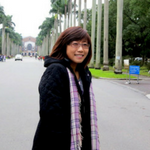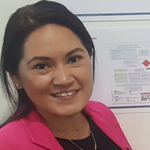Day 2 :
- Palliativecare and Symptom Management| Palliative Care and Rehabilitation Medicine| Palliative Care and Occupational therapy| Palliative Care and Emergency Medicine| Pediatrics and Children Care| Palliative Care in Assisted Dying| Palliative Care in Trauma| Palliative Care and Health Issues
Session Introduction
Yvonne Hsiung
Mackay Medical College, Taiwan
Title: Development and initial cross-cultural validation of the Confucian Orientation Beliefs scale (COB)

Biography:
Yvonne Hsiung received her PhD in Palliative Care Nursing in 2011. Being an ethical consultant for terminal patients and family surrogates, her previous research, teaching, and clinical experiences mostly focused on the health promotion, community education, and cultural advance care planning among minority groups in the Greater Chicago Area. She returned to Taiwan in 2012 because her father required cancer care. Now she is at Mackay Medical College teaching courses about Oncology Nursing, Palliative Care, Medical Ethics, Spiritual Nursing Care, and Life and Death Education.
Abstract:
A series of cross-cultural studies were conducted to develop and validate a cultural measure, Confucian Orientation Beliefs (COB) Scale. The original 66-item acculturation scale was constructed among Chinese-American immigrants residing in greater Chicago area (n=211) with specific aims to assess a broad range of traditional Chinese beliefs. Through examinations of content validity, internal consistency (α = .86), and an inter-item correlation of .27 (p<.001), the initial exploratory factor analysis (EFA) suggested 3 principal components: familialism (α = .84), male and physician patermalism (α = .82), and death taboos (α = .89). CO among overseas Chinese was found highly positively correlated with American acculturation, attitudes toward life-sustaining treatment, and palliative care usage. A following confirmatory factor analysis (CFA) was supportve with a goodness of fit of 0.95 in a relatively smaller Taiwan suburban sample (n = 122). Further EFA and CFA among hospitalized patients from various Taiwan areas (n =508) yielded a slightly different structure: male paternalism, filial piety, and death taboo joinly captured a salient cultural factor (α = .83); a single dimension was revealed as an individual’s propensity to conform to Confucian traditions, and this orientation is specifically related to life-sustaining treatment attitudes (AVE= 55.39, AGFI= .966, p= .009). A data-driven and efficient tool, the 6-item COB scale (short form), was created with strong psychometric properties. While CO remains prominent in modern Chinese-ethnic societies to affect family caregivers’ life-sustaining treatment decision-making, future research is necessary to replicate studies for temporal stability across heterogeneous Chinese-speaking and Confucianism-oriented samples.
Daniela Vasquez
Clinical Nurse Specialist, Australia
Title: Time Is Precious (TIP) ): Person centred end of life care in the emergency department

Biography:
My nursing begun in 2007 as an Enrolled Nurse, I worked in geriatrics, psycho geriatrics, surgical & cardiology. Successfully completed my new graduate program at Liverpool hospital, my 1st rotation in Emergency then my 2nd rotation in Haemodialysis. I returned to ED and stayed there for 5 years. Only recently I have started working as a clinical Nurse Specialist in Palliative care.
Abstract:
A primary focus of Emergency Department (ED) is to provide urgent medical treatment in the hope of minimising suffering and preventing treatment delays for patients whose death is imminent or inevitable. The focus of palliative care is on quality of life through symptom management, utilising a multi-disciplinary approach, whilst providing support to the carer and family. Though not oppositional to the ED process, there are gaps in the approaches to achieving patients’ goals of care. Additionally, palliative care patients are often forgotten or seen as low priority, and as a result they are having delayed medical review, commencement of inapplicable investigations and inappropriate management. Further, they are not receiving appropriate nursing care and unnecessary stress is put on the patient and families by exposing them to an undesirable busy environment with little privacy and compassion.
There is an expected 21% increase in patients with palliative care needs using EDs by 2021 in the South Western Sydney Local Health District. This will translate into longer wait times unless a system to cater for this patient cohort is in place.
In response to this need we have designed a detailed model of service named Time is Precious (TIP). The aim of the TIP Project is to improve the care of patients who present to the ED in their last week’s/ days of life. TIP involves early identification, escalation particularly for acutely distressed patients or families, fast-tracked medical review to improve disposition planning, and discussion on goals of care (GOC) which empowers the patient and the family to make a decision where to die at home or the hospital.
We have developed the concept of a ED Specific End of Life Care Project in the ED for patients with palliative care needs, consisting of a guide to assist with care and disposition planning, checklists, education, a resource folder and a collaborative approach to care planning, incorporating the multidisciplinary team in the ED and extending to inpatient medical and nursing teams.
Jeanette Pham
Memorial Hospital System, USA
Title: Lessons learned from the dying on becoming a better person and practitioner

Biography:
Jeanette Pham is a Board Certified Nurse Practitioner with Seasons Hospice and Palliative. For the past six years Jeanette has delivered in-patient Palliative Care in the Memorial Hospital System in Hollywood, Florida. Jeanette is passionate about educating patients and families on the importance of making informed decisions in end of life. She speaks at local conferences about her work in Palliative Care. In addition, Jeanette often presents at local women’s groups on subjects related to living your best life.
Abstract:
At the bedside of our Palliative Care patients we can learn a great deal about living life well. Patients, when faced with their own mortality, can be some of our most inspiring teachers challenging us to better than we are today in our personal and professional lives. They teach lessons on the importance of daily gratitude and the significance of embracing the present moment. They teach about the fallacy of “bucket list,” and the need to leave judgment at the door. They teach us that every person has a unique definition of quality of life and the need to cultivate compassionate detachment in order to have longevity in the field of Palliative Care. They challenge us to work on and develop the art of conversation to help guide our patients and families in decision making. In addition, they teach us to learn the needs of our patient's (hint, they may not be what we think). Each day our dying patient’s seek to teach, guide, and lead us if we make the time, pull up a seat and just listen
Noura Y. AlSalloum
King Fahad Medical City, Saudi Arabia
Title: Communication needs of palliative patients with communication barriers.

Biography:
Dr. AlSalloum graduated from King Saud University, Riyadh. Currently in her fourth year as a Family Medicine resident enjoying her training at King Fahad Medical City.
Abstract:
Objective: To explore the communication needs of cancer patients with barriers to communication, while under palliative care especially towards the last phase of life.
Methods: We use a reflective learning process in the context of an incident that happened in the palliative care unit in King Fahad medical city, Riyadh.
Case: 50 year old male with locally advanced squamous cell carcinoma of the skin of the face involving the lip, invading and destroying the maxilla and nose, had difficulty in talking. He had history of hearing loss, unrelated to the cancer but aggrevating his communication barrier. Worsening the communication gap was the language barrier where most of the health care staff were non –Arabic speaking and the patient could barely write in English. He was using a list of needs written on paper in Arabic and Englsh. The list was not comprehensive and needed to be frequently updated and he paper required replacements.
Reflection: We did a literature search to look for documented needs of cancer patients who could not talk. We added and updated the list of needs, printed it in both englisha and Arabic on a large A3 paper and laminated it to prevent damage. The patient could now use this locally modified Augmentive and Alternative Communication (AAC) method to communicate his needs to the health care-giver.
Conclusions: Palliative patients with communication barriers need AAC methods to effectively communicate their care needs. We recommend further studies to standardize the items and the language used in the list of palliative care needs to make it culturally relevant for use in the Arab population.
Zohra Kurji
Aga Khan University Hospital, Pakistan
Title: Using simulation as strategy for teaching End of Life care in palliative care course in under graduate Nursing program AKUSOANM Karachi Pakistan

Biography:
Zohra Kurji is primarily Public Health Nurse working with Aga Khan University Hospital (AKUH) as an Assistant Professor and a section head of palliative care. She is the Chairperson for Aga Khan Local Health Board Council, Kharadar. With an undergraduate degree in nursing from the AKUH, a graduate degree in International Primary Health Care from the University of London, she also has a good exposure with the training on Global Tobacco control programme from the School of Public Health Bloomberg Johns Hopkins University, USA. In addition she is part of first faculty training program on faculty development in simulation from Boston Harvard simulation centre. She is one of the few certified Lactation consultants actively promoting breastfeeding in the communities.
Since 2007, Zohra has been engaged in the academic environment and simulation courses. Currently she is the lead facilitator for Blended learning programme at SONAM, and a member of the Simulation based CIME Committee. In addition, she works extensively for pedagogies for undergraduate and graduate curricula. She has also been invited by the Pakistan Nursing Council to develop national curriculum for PostRN and BScN programmes.
Zohra' research interests are in the areas of Public Health, Lactation, early Nutrition, Palliative, and Blended Learning and inter professional education with simulation.
Abstract:
Death and dying although is a reality yet for many it remains a taboo to be discussed. It is reported that nursing students feel considerable anxiety and sadness, when they experience death on a clinical placement. Therefore, teaching end-of-life nursing care and providing practice experiences in caring for dying patients are essential competencies in nursing education programs. It is reported that end- of- life care simulation can produce an effective and safe learning situation where the students increase their knowledge about palliative care principles and feel more comfortable and confident in communicating with patients and their families. Despite this evidence of the effectiveness of simulation in education programs current analysis indicates that where palliative and end-of-life care is included in undergraduate curricula it is delivered largely in theoretical form. Hence, it is planned to introduce simulation in palliative care nursing course in which year II students of Post-RN BScN programme at AKUSONAM- Karachi will enrolled in January 2018 to provide care to patients and their families in death and dying situation. The study employed a quasi-experimental design (pre-post intervention design to see the impact of simulation and debriefing on students’ learning. Data collection is completed and analysis of study in progress. Hence this study will gives students experiential learning by engagement with simulated scenarios. Moreover engaging them in safe learning environment with complex issues will and improve patient safety and outcome.
Dr. GVM Chamath Fernando
Diploma in Family Medicine, SriLanka
Title: A clinical audit aimed at optimizing pain assessment in resident cancer patients in a Sri Lankan oncology setting –reflection on the experience

Biography:
Dr. GVM Chamath Fernando graduated from Faculty of Medical Sciences, University of Sri Jayewardenepura as a Medical Doctor. He is currently following his MSc in Palliative Medicine at Cardiff University, United Kingdom as well as Postgraduate Diploma in Family Medicine at Postgraduate Institute of Medicine, Colombo, Sri Lanka. Having worked in the areas of Anaesthesiology and Intensive Care in a teaching hospital previously, he is presently working as a lecturer in Family Medicine for 3.5 years at the same University from which he graduated. His research interests lie in palliative medicine, bone densitometry and music therapy.
Abstract:
Being a commonly experienced distressful symptom, ‘pain’ is not sufficiently managed in world-wide cancer patients. One of the principle obstacle identified is inadequate assessment of pain which in turn leads to its poor management. This is heralded by the lack of medical or nursing professionals qualified in Palliative Medicine/Care to date in Sri Lanka. Hence, the aim of this clinical audit was to optimize the assessment of pain among resident patients of a tertiary care cancer hospital by oncology doctors. A simple “pain and associated symptom chart” was designed for the doctors to document pain experienced by resident cancer patients in terms of intensity, both upon admission and on daily clerking (expected to be documented 100% each, regardless of the presence or absence of pain on a Visual Analog Scale from 0-10). Documentation of the site and character of pain were expected to be 80% each if pain was present on assessment. Despite conducting three audit cycles with appropriate staff training and clarifications in between each cycle, the pain assessment practices could not be improved among the doctors concerned. In the third audit cycle it was noted that 23.5% of the charts were marked as ‘0’ pain intensity upon admission and have been neglected thereon. It was also noted that some patients were documented elsewhere than the form to experience nor pain neither breathlessness and were still on opioid analgesics which could potentially have led to litigation. Therefore, it is of utmost importance to incorporate clinical audit as a mandatory practice to the clinical oncology settings where it is not practiced. Relevant training has to be delivered to the concerned medical professionals. Appointment of healthcare practitioners dedicated to palliative care is essential to ensure a better quality of life (QOL) for patients with life-limiting illnesses.
Anum Salman Surani
Physiotherapist, Pakistan
Title: A survey to assess the use of manual hyperinflation by physiotherapists in intensive care units

Biography:
Anum Salman has completed her MSc at the age of 24 years from Liaquat National Hospital in neuro musculoskeletal rehabilitation. She is working as a staff physiotherapist in Memon Medical Institute Hospital and have more than 3 years of clinical experience
Abstract:
Objectives: The objectives were to determine whether or not manual hyperinflation (MHT) is used as a treatment technique by physiotherapists on respiratory compromised patients in intensive care units (ICU).
Methods: A questionnaire was developed by according to the available literature on the use of manual hyperinflation by physiotherapists Physiotherapists who practice cardiopulmonary physiotherapy in ICUs of hospitals in the private sectors in Karachi were identified then targeted for the study. The self administered questionnaire was then posted and emailed to the physiotherapists identified for inclusion into the study.
Results: A total of 100 questionnaires were distributed among physiotherapists. Of the 100 questionnaires distributed, The response rate for the questionnaires was 80% The results showed 93% physiotherapist use MHT in ICU. Maximum airway pressure used by 78.8% physiotherapist is 20cmH2O.80% used manometer.30% use shaking as combination technique 76.3%used percussion,52.5% postural drainage and 48.8% used nebulization, 58.8% give treatment of MHT for 5 to 10 minutes. Indication of MHT 42.5% physiotherapist give to increase oxygen saturation,43% for stimulation of cough, 63.8% used for secretion dislodge,61.3% used to increase lung compliance and 53.3% used to increase lung volume. There is no physiotherapist who is post graduated in the field of cardiopulmonary rehabilitation.
Conclusion: The survey of 80 physiotherapists, working in ICUs of Karachi, indicated that MHI is widely used treatment technique. There is a general consensus regarding the benefits, contraindications and precautions regarding the use of MHI. This has been shown to be in line with current studies conducted in other countries. The survey does show that there is a need for the development of post graduation program in cardiopulmonary rehabilitation pertaining to the use of MHT.
